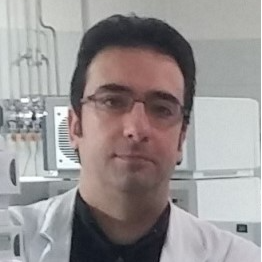Advanced Analysis Techniques of Food Contaminants and Risk Assessment
A special issue of Applied Sciences (ISSN 2076-3417). This special issue belongs to the section "Food Science and Technology".
Deadline for manuscript submissions: closed (15 October 2021) | Viewed by 19522
Special Issue Editors
Interests: food safety; food science and technology; analytical chemistry; analytical methods development
Special Issues, Collections and Topics in MDPI journals
Interests: food science and technology; analytical chemistry; food safety; mass spectrometry; analytical methods development
Interests: food texture; food color; food safety; consumers; food sustainability
Special Issues, Collections and Topics in MDPI journals
Special Issue Information
Dear Colleagues,
It is with great pleasure that I introduce you to a new Special Issue of Applied Sciences, which is dedicated to food safety, in particular, to food contaminant determination. This Special Issue is titled “Advanced Analysis Techniques of Food Contaminants and Risk Assessment”.
During the last several years, the attention of the scientific community involved in food safety studies has been focusing on the simultaneous presence of different chemical contaminants in the same food, the so-called “cocktail effect”.
Indeed, more than one contaminant may be present in the same food, and there are many interactions, among these, which can be hypothesized. These interactions may lead to the increase of toxicity, as well as to partial detoxification. All these effects have to be statistically evaluated before confirming an effective risk. Moreover, the range of food to take into account within these studies is very wide. Therefore, large amounts of data are needed.
Comprehensive and useful datasets maybe obtained more easily by using new approaches and new analytical procedures able to quickly and economically provide many parameters. The “green chemistry” perspective should also be taken into account for this purpose.
This Special Issue is focused on new chemical approaches in food safety controls. All papers dealing with new procedures, approaches, and technologies developed for the determination of contaminants in food are welcome. Manuscripts dealing with new statistical and bioinformatics tools in food safety, as well as risk assessment, monitoring, and other surveys dealing with food contaminants will also be considered.
Dr. Marco IammarinoDr. Carmen Palermo
Prof. Dr. Igor Tomasevic
Guest Editors
Manuscript Submission Information
Manuscripts should be submitted online at www.mdpi.com by registering and logging in to this website. Once you are registered, click here to go to the submission form. Manuscripts can be submitted until the deadline. All submissions that pass pre-check are peer-reviewed. Accepted papers will be published continuously in the journal (as soon as accepted) and will be listed together on the special issue website. Research articles, review articles as well as short communications are invited. For planned papers, a title and short abstract (about 100 words) can be sent to the Editorial Office for announcement on this website.
Submitted manuscripts should not have been published previously, nor be under consideration for publication elsewhere (except conference proceedings papers). All manuscripts are thoroughly refereed through a single-blind peer-review process. A guide for authors and other relevant information for submission of manuscripts is available on the Instructions for Authors page. Applied Sciences is an international peer-reviewed open access semimonthly journal published by MDPI.
Please visit the Instructions for Authors page before submitting a manuscript. The Article Processing Charge (APC) for publication in this open access journal is 2400 CHF (Swiss Francs). Submitted papers should be well formatted and use good English. Authors may use MDPI's English editing service prior to publication or during author revisions.
Keywords
- analytical method development
- food contaminants
- food control
- food safety
- risk assessment







